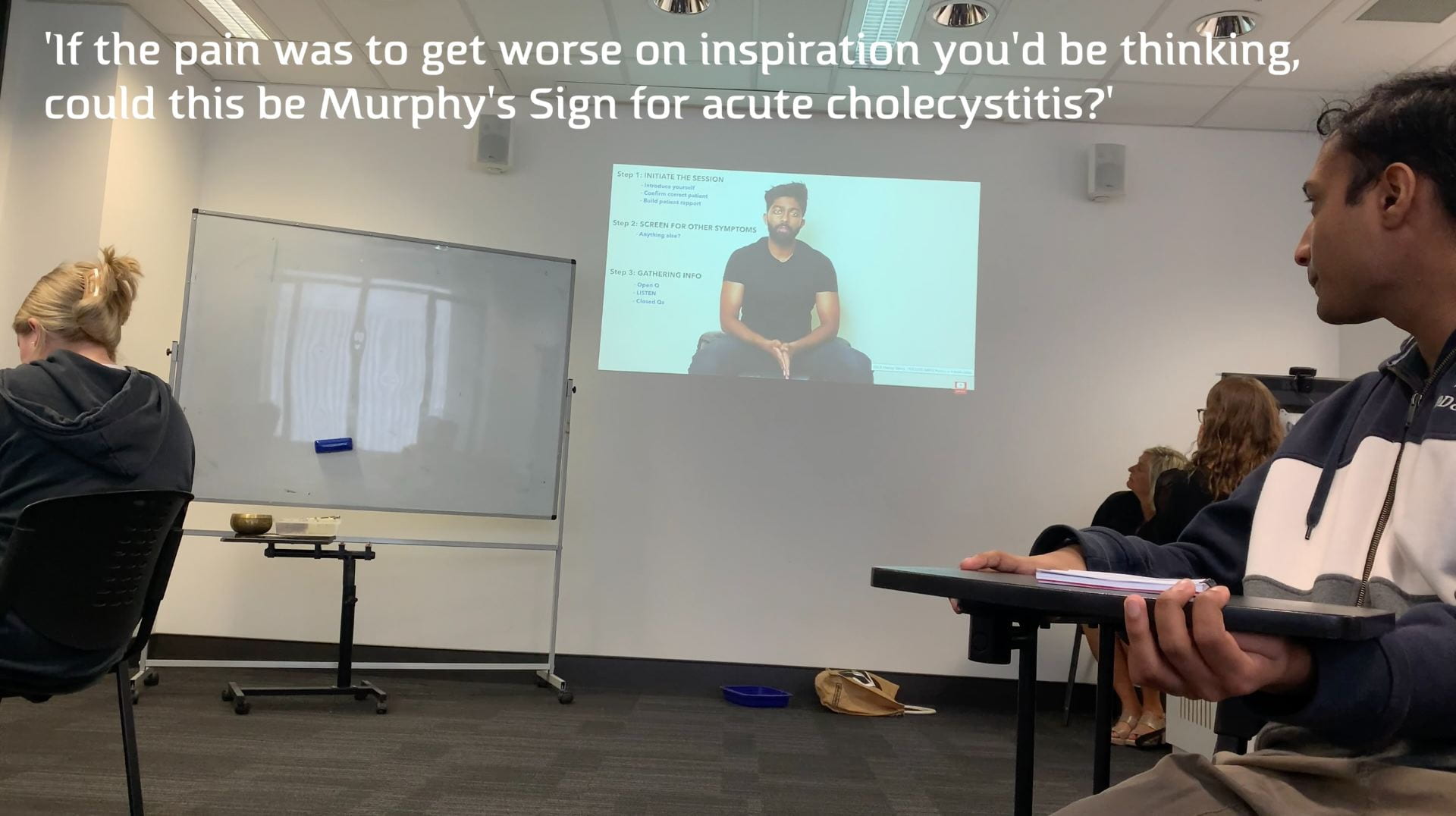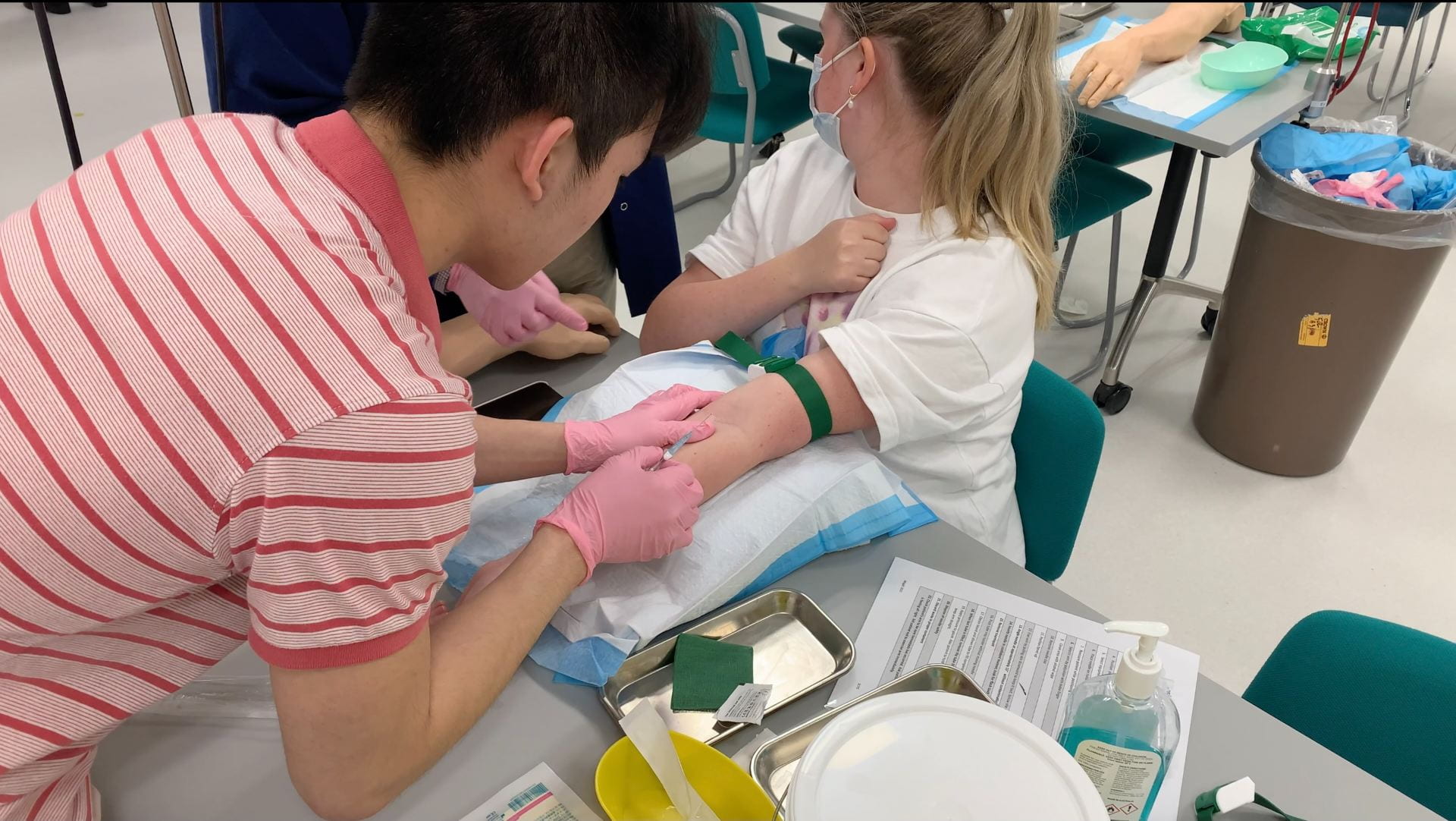
Me walking out of a morning ward round a few weeks ago as a 4th year medical student 😉
Hi there, I’m Harry and welcome to my first blog for The Inside Word! I’m in the 4th year of my medical degree now (aka 2/3s of a Doctor hehe) and I spend 35-40 hours every week at the hospital. But looking back on 2nd and 3rd year – the pre-clinical years, they mostly consisted of lectures and labs based at the mighty Grafton Campus. If you are wondering what these pre-clinical years are different to the other programmes, keep reading. Here’s a list of things that gives us a first taste of clinical medicine during the pre-clinical stages of our degree.
2nd year:
- Cadaver dissection labs. We would work in small groups to dissect and explore the anatomy of the body (typically obtained from deceased individuals who have donated their bodies for medical education and research), with guidance from instructors. We would often practise basic suturing and surgical skills and have quick radiology teaching from Doctors who are supervising us as well.
- Small Group Activities (SGA). Again we get into small groups of 10-12 people and learn medical ethics, different aspects of communication skills, history taking, self-care and reflection techniques, and role-plays.
- Clinical skills teaching. We get the chance to practise clinical examinations on each other with the guide and supervision of qualified Doctors. Examples would be a cardiovascular exam e.g. auscultation and measuring blood pressures; abdominal exam e.g. percussing and palpating the tummy; or respiratory exam e.g. listening to breath sounds from the chest and back.
- GP visit. One afternoon observing in a General Practice, sitting in with GP consultations.

One of the 3rd year SGAs when we are learning to perform a gastrointestinal examination.
3rd year:
- Cadaver dissection labs: same as 2nd year except in 2nd year, we dissect everything below the neck, whereas in 3rd year, we dissect everything above the neck!
- SGAs: same as 2nd years while having more component of history taking and role-plays to prepare us for the wards.
- Clinical skills teaching. We get a revision of the clinical examinations that we learnt in 2nd year plus learning some more advanced clinical examinations like the peripheral and cranial nerve exams.
- IV cannulation and phlebotomy lab. We are taught by the legendary Dr. Magdi, who is an anaesthetist and also runs our basic life support teaching. During this session we get to take blood from fake arms, cannulate fake arms, and cannulate each other, with real needles and test tubes.
- Clinical methods. This is what everyone is looking forward to in 3rd year because we get to put our stethoscopes around our necks and finally feel like a Doctor. We spend one afternoon every week at the hospital. Each of us are allocated as a small group to a ward over at North Shore, Auckland City, or Middlemore Hospital. We also get a supervisor which could be one of our lecturers who is a specialist Doctor in that ward! The gem here is that we get bedside teachings from the senior Doctors and time to practise our history taking and clinical examination skills with real patients. We visit the same ward every week together and learn to write case histories on patients (which we need to do routinely in our clinical years and as Doctors) we saw.

Practising an iV line on one of my friends 🙂